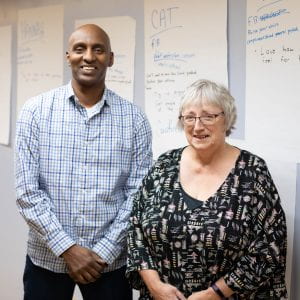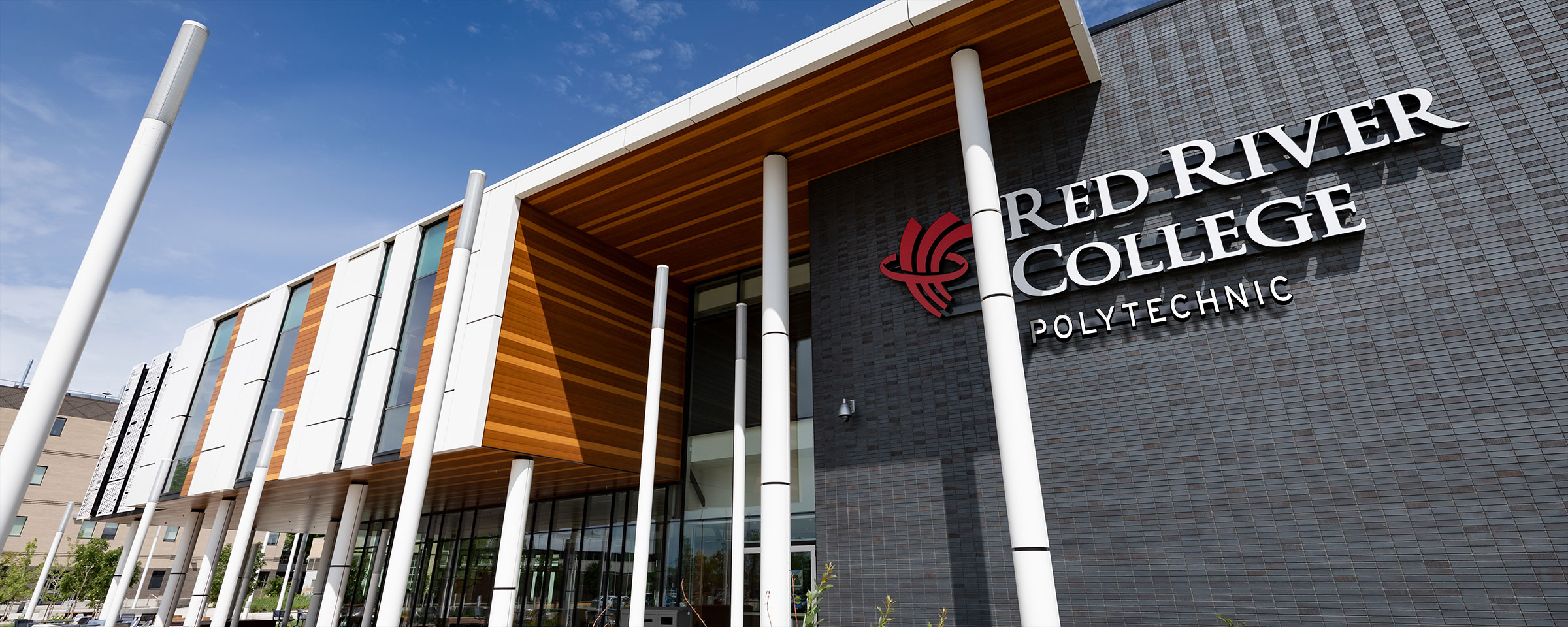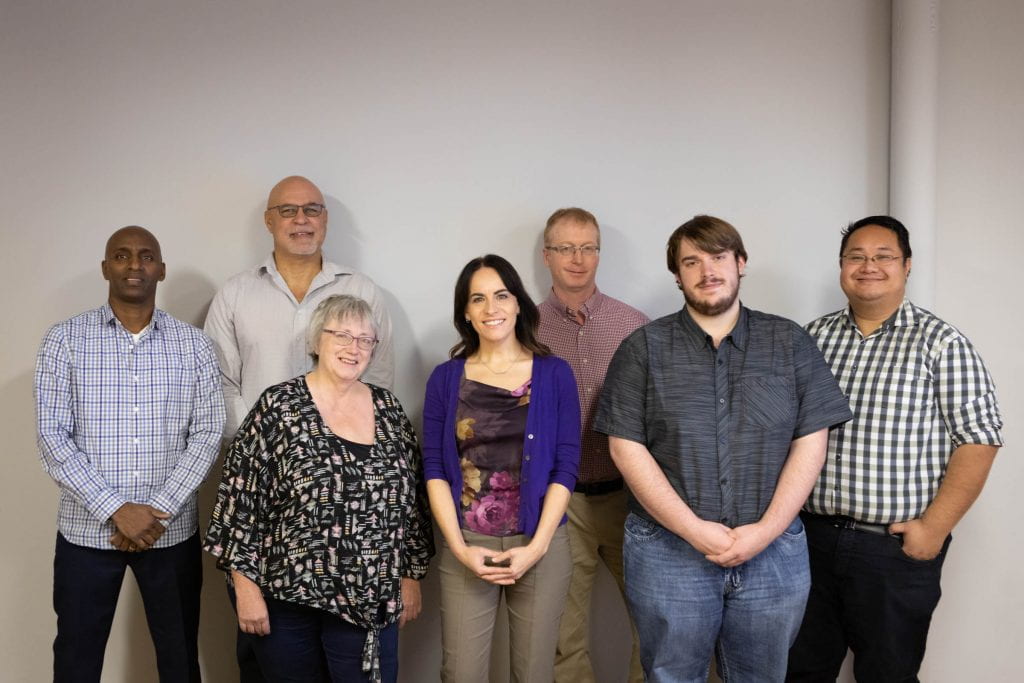Opportunities await: Students help streamline operations for employment aid organization
Red River College’s ACE Project Space is opening new doors for Equal Opportunities West.
An initiative of RRC’s Applied Computer Education (ACE) department, the ACE Project Space plays host to students working in conjunction with corporations, entrepreneurs and non-profits to bring business and project ideas to reality.
Students in the interactive workshop recently created an application for Equal Opportunities West (EOW) to automate its scheduling system. The organization provides support services to people with work barriers — such as physical and intellectual disabilities or mental health issues — to help secure competitive employment or start businesses of their own.
The non-profit also runs a day program for people with intellectual disabilities.
“We as an organization have expanded so much over the years,” says Susan Morgan, EOW’s executive director. “We really felt it was getting difficult to schedule everybody and get everything on paper. Just physically keeping track of everybody was becoming a daunting task.”
“We had an idea for an app. We heard about the ACE program and we went down to meet with them and they certainly thought it was something they could help with. I had looked at these canned apps, but they were mostly for the restaurant industry. There are lots of good scheduling apps out there, but nothing quite as in-depth and comprehensive as what we needed.”
David Beauchamp, a Business Information Technology (BIT) student, was one of five ACE Project Space participants to work on the scheduling project.
“Their problem was they were scheduling everything on paper and keeping track of everything on white boards and spreadsheets, and it was just everywhere,” says Beauchamp (shown above, second from right).
“Our app was made to create a schedule that their managers could add people to and tell them what they’re doing each day. They can see who is on the schedule and everything staff needs to know. You just open up the app and it tells them what they’re doing that day, where they’re going and who they’re with.
 “It also gave them the ability to manage their vehicles. They have assigned vehicles they use when something is across the city and that was hard to track because it was just a sign-up sheet. Sometimes people forget to sign in and they just wouldn’t know. Now, when you’re assigned to an activity, it gives you an option to sign it in, and that will be tracked and management can see you did sign in the vehicle.”
“It also gave them the ability to manage their vehicles. They have assigned vehicles they use when something is across the city and that was hard to track because it was just a sign-up sheet. Sometimes people forget to sign in and they just wouldn’t know. Now, when you’re assigned to an activity, it gives you an option to sign it in, and that will be tracked and management can see you did sign in the vehicle.”
Dylan Fontaine, an educational assistant at ACE Project Space, says the project wasn’t without its challenges.
“There was a lot of integration with the business processes of the client. It couldn’t be as simple as a regular scheduling piece of software. There was more of a complex story going on there,” Fontaine says.
“They (the students) had to flush out the business processes and automate where it made sense to do so, but leave enough wiggle room for the clients to go off the rails, where it doesn’t make sense to fully automate.”
Fontaine says the ACE Project Space uses agile methodology, an approach to software development that stresses a collaborative effort between students and their client.
“The client is involved at every step of the way. The students talk to them and they take over the leadership of the project after the initial introduction. We try to get a product put together and see what the client thinks of it and the students make the tweaks that are requested. We try to do that with every sprint. We have two-week sprints.”
That business-like environment makes the ACE Project Space an exciting place to work, says Fontaine.
“Ultimately, we’re not following a course outline or a course map, we are dealing with a situation as it comes up and adapting and pivoting on that,” he says. It’s a very good opportunity for students and I think for staff, as well.”
Morgan (shown above, in inset photo) thinks the ACE Project Space app will make a major impact at Equal Opportunities West.
“We’re still trying to get the hang of it, but I think it’s going to be life-changing around here,” she says.
“This group of students, I can’t say enough about their keenness for this project. We invited them down to see why this app was important to us and they got it right away. They saw all the piles of paper and the big whiteboard and they went ‘a-ha’ right away.”
Profile by Jared Story (Creative Communications, 2005)

